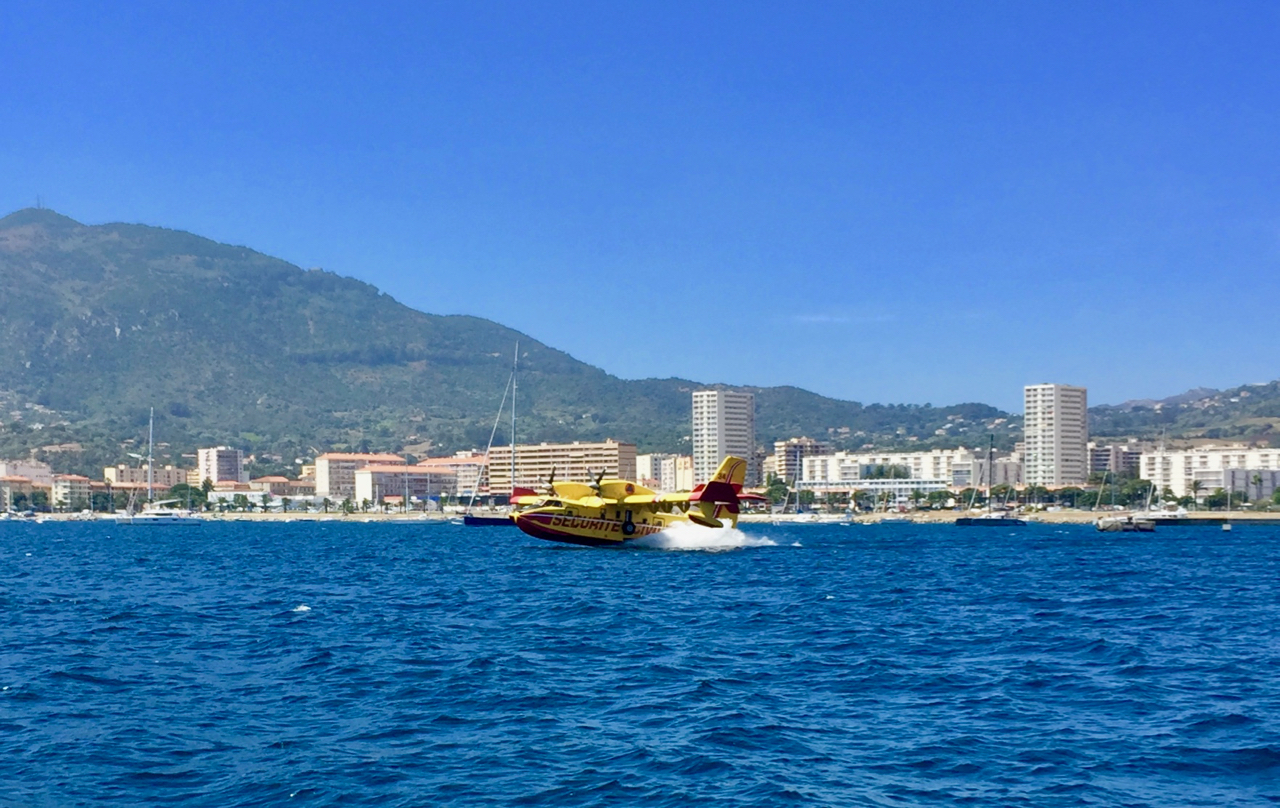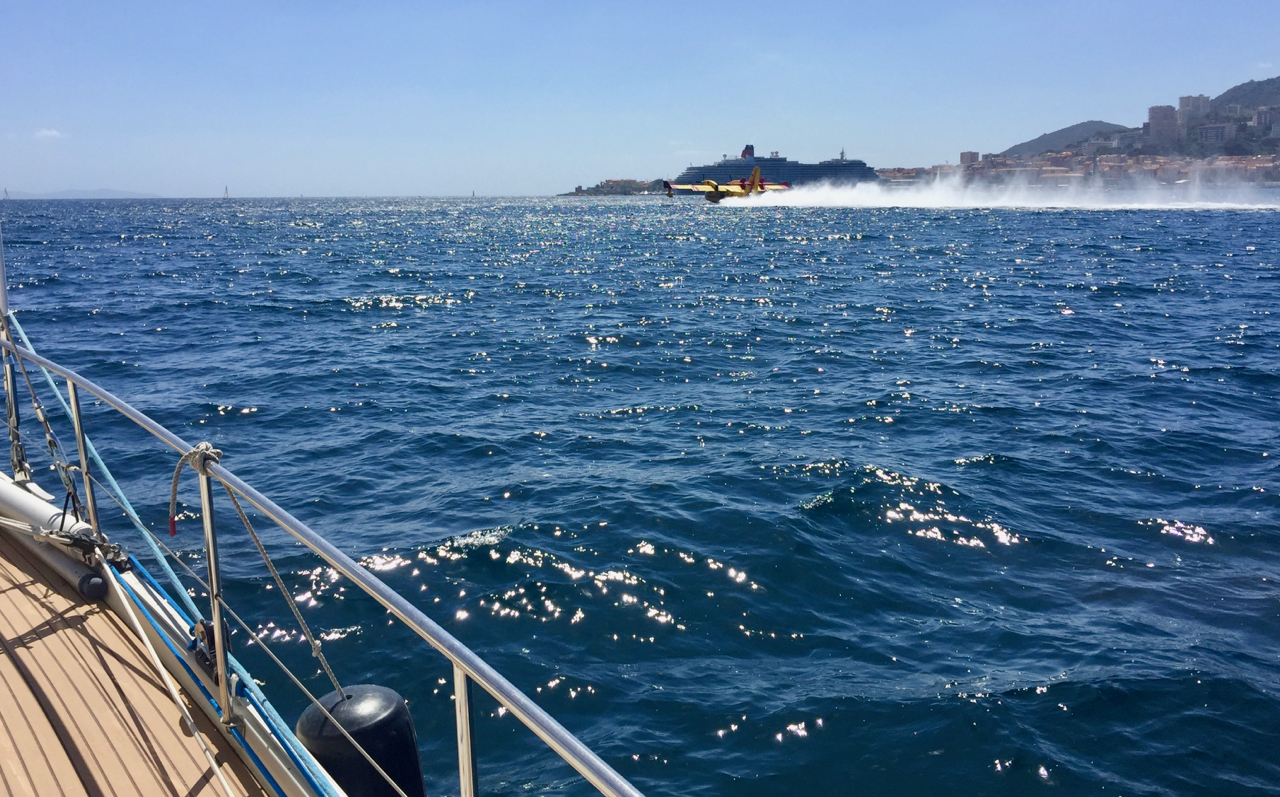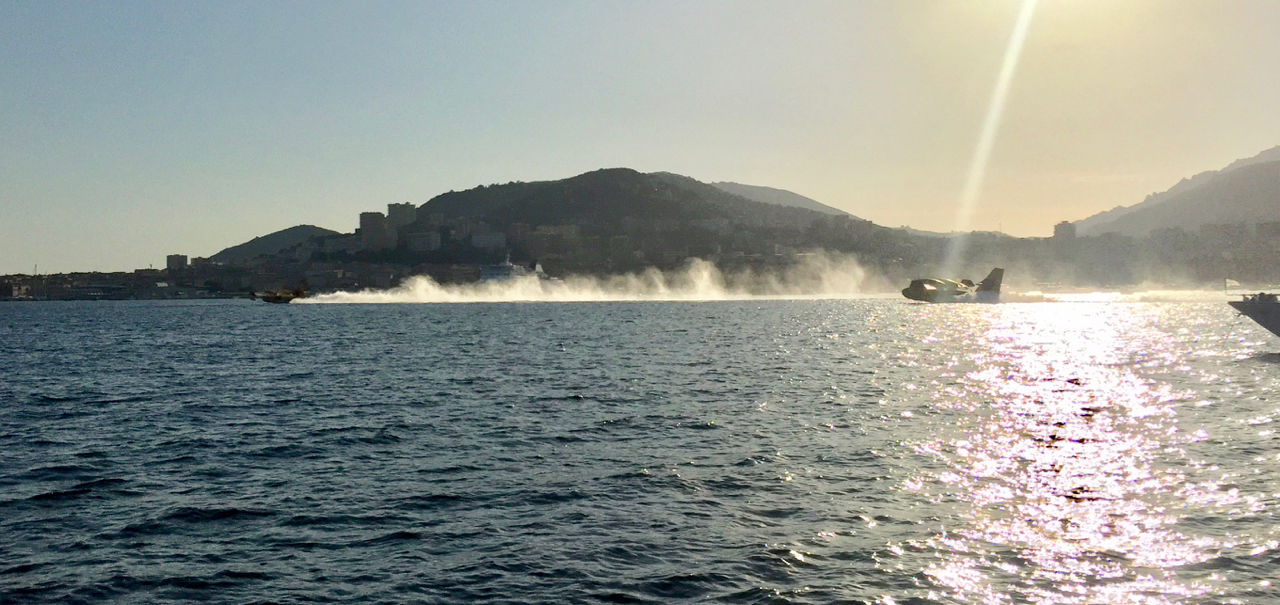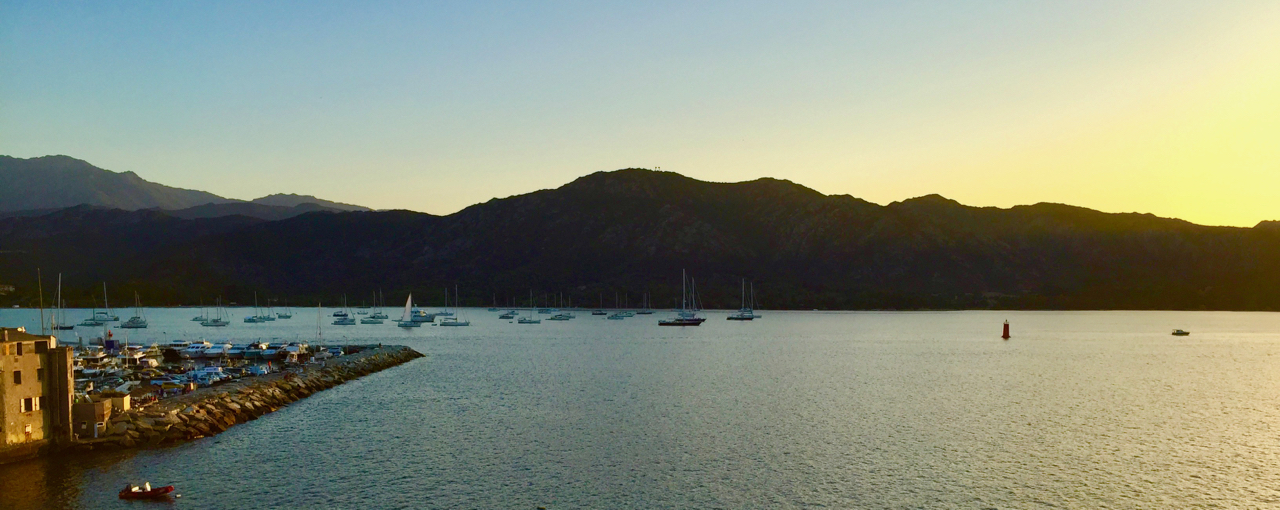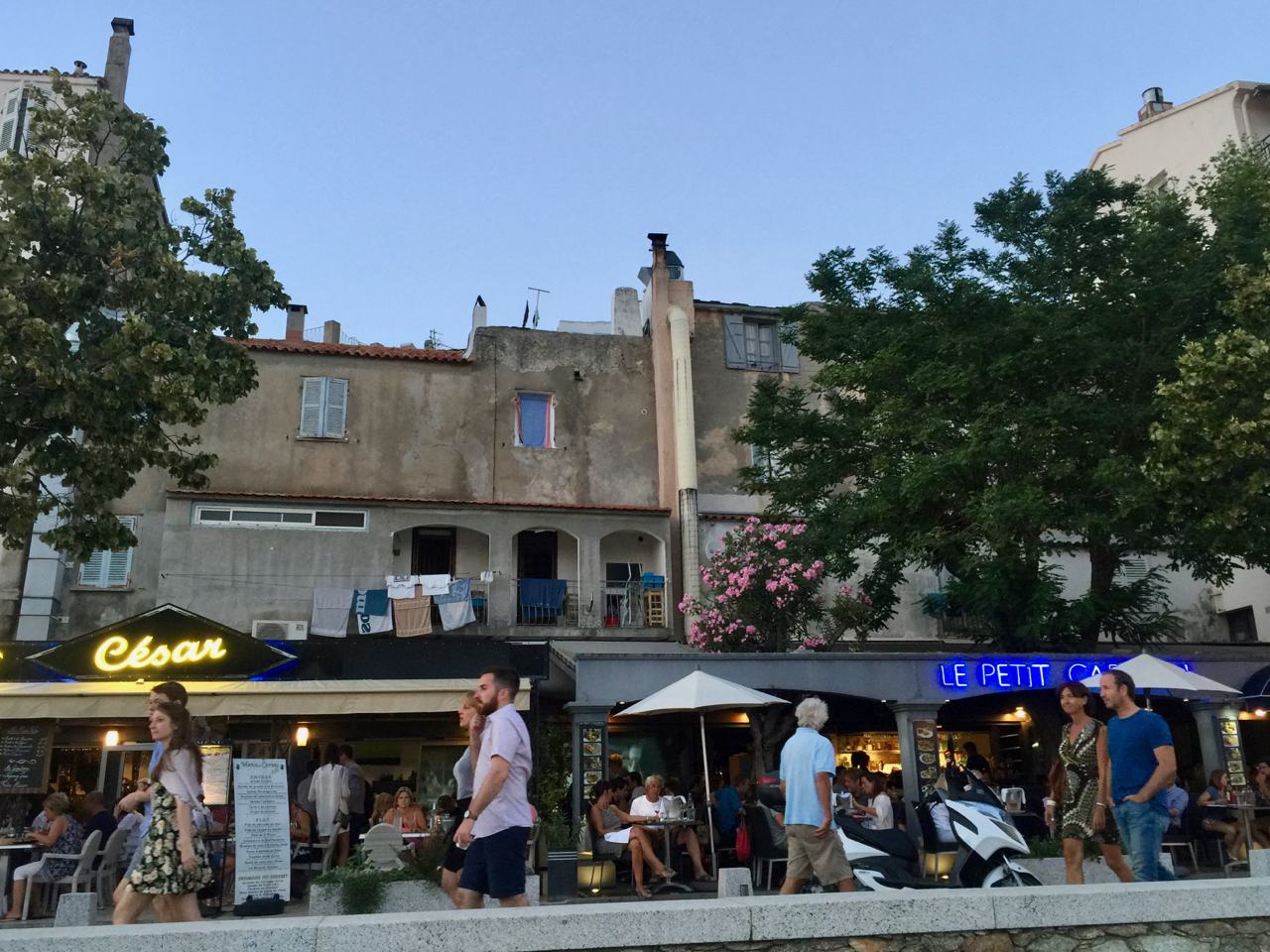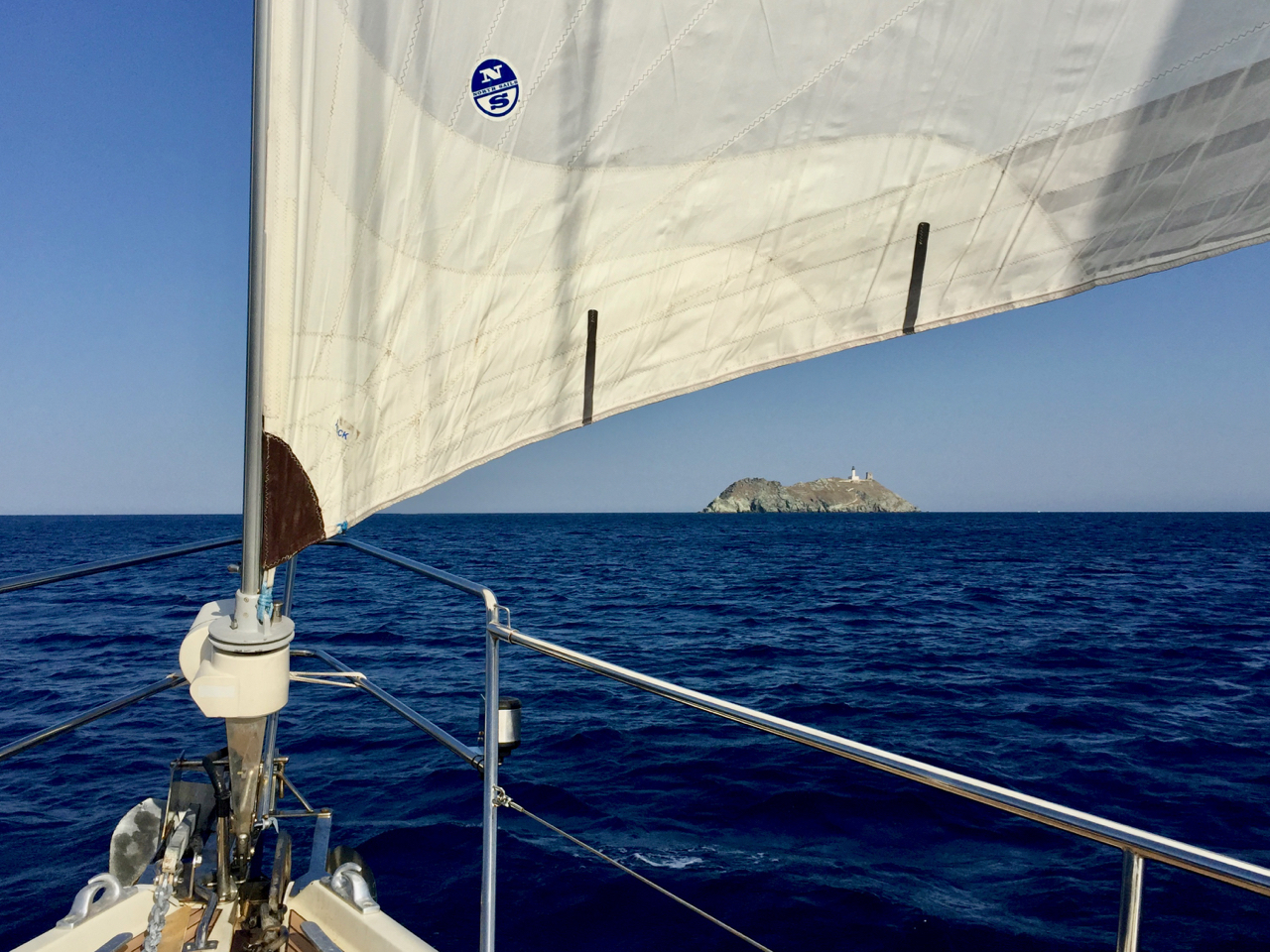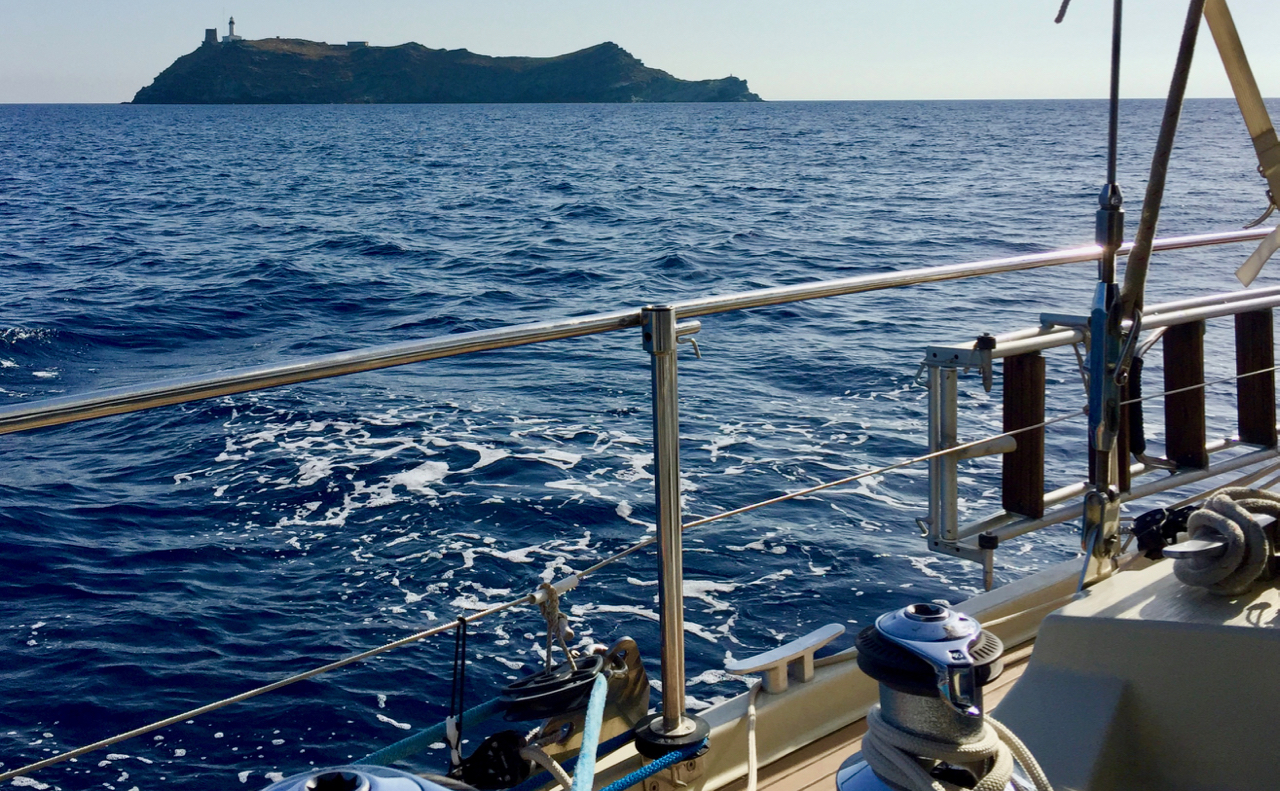Peregrinus has three times come across submarines going in or out of port. In the United States, we came across a submarine coming into Norfolk, escorted by machine-gun toting fast boats screaming on the radio every few seconds that anyone within a sizeable radius of them would be summarily shot; we had to get out of the channel. All US Navy submarines are nuclear, and this one was going very, very fast, leaving a tall water plume behind its vertical stabiliser —and of course energy consumption is not an issue for these fish. This must be standard practice around these parts, because we heard the screams on the radio a couple of other times as we sailed the lower Chesapeake.
In France, sailing by Toulon, a submarine quietly passed our stern at modest speed. This was certainly a small (74-metres) Rubis-class nuclear-powered attack sub, as this is their home port, and one hopes the large SSB Triomphant-class don't let themselves be seen. No visible escort.
When we were at anchor in Le Grazie, near the naval facilities at La Spezia, we saw this Todaro-class submarine, 56-metres, possibly Scirè, leaving port. Italy, birthplace of Enrico Fermi, abandoned nuclear technology in 1991, so these non-nuclear powered subs have a top surface speed of 12 knots, and are the top Italian underwater weapons. Escort? Nah. Several local fishermen actually sped right by it.


